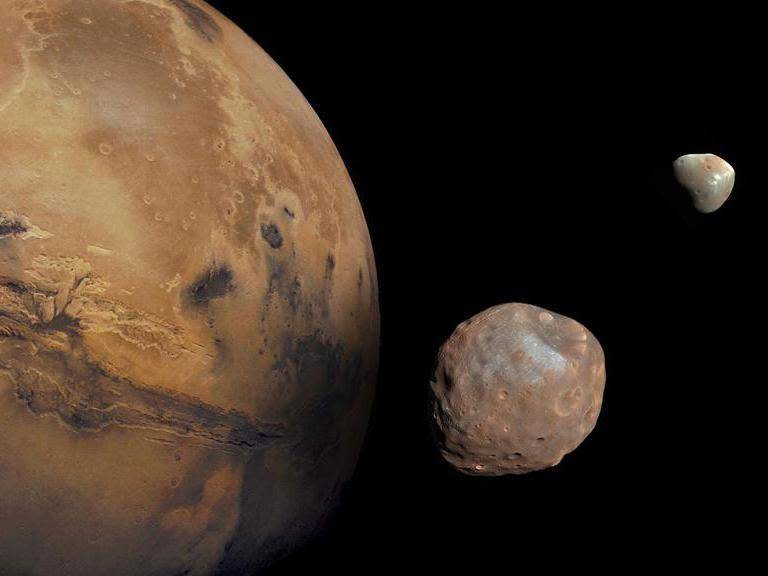Mysterious Martian moons were created by violent collision, say scientists
A violent impact between Mars and another planet-sized object resulted in the birth of the Red Planet’s two moons, according to a new study.
The origin of Phobos and Deimos, the two small moons that orbit close to the surface of Mars, have been hotly debated by scientists for decades.
While many have suggested they are asteroids that were captured intact by the planet’s gravity long ago, the new research suggested an altogether more dramatic origin story.
“Ours is the first self-consistent model to identify the type of impact needed to led to the formation of Mars’ two small moons,” said Dr Robin Canup, an astrophysicist at Southwest Research Institute, who led the study.
The collision is comparable to the one that formed our moon – another phenomenon Dr Canup is investigating – which is thought to have been formed when a Mars-sized object crashed into Earth 4.5 billion years ago.
Compared to our moon, however, Phobos and Deimos are tiny (only 7.5 miles and 14 miles, respectively) and the scientists used their size to understand the kind of object that would need to strike the Red Planet to create them.
“A key result of the new work is the size of the impactor,” said Dr Canup.

“We find that a large impactor – similar in size to the largest asteroids Vesta and Ceres – is needed, rather than a giant impactor.”
When such an object, somewhere between 300 and 600 miles in size, smashed into the side of Mars, it produced a disc of orbiting debris that began to orbit the planetary body.
The outer portions of the disc then accumulated to form Phobos and Deimos while the debris closer to the planet spiralled inwards and was assimilated into the planet.
The state-of-the-art computer models used by the scientists to simulate the formation of Mars’s moons also allowed them to infer what the moons are like.
“The model also predicts that the two moons are derived primarily from material originating in Mars, so their bulk compositions should be similar to that of Mars for most elements,” said Dr Canup.
“However, heating of the ejecta and the low escape velocity from Mars suggests that water vapour would have been lost, implying that the moons will be dry if they formed by impact.”
Preparatory work such as this will be beneficial for future space expeditions aiming to investigate Mars and its moons, such as the Japan Aerospace Exploration Agency Mars Moons Exploration (MMX) mission.
That spacecraft is set to launch in 2024, and will visit both Martian moons and collect samples before returning to Earth five years later.

 Yahoo News
Yahoo News 
